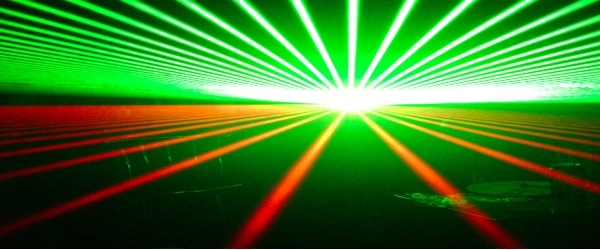It doesn’t matter how excited you are about the research or how intriguing the biology is, if you cannot record it – and record it well – it won’t matter. Here I will tell you how to take the perfect electron micrograph. Never waste a sample again.
Start with a Good Sample
A picturesque landscape can help even the most amateur photographer produce a photograph worth hanging on the wall. The same goes for electron microscopy. Starting with a publication worthy sample is the best way to take a publication worthy image.
Sample preparation for electron microscopy requires multiple of steps and harsh treatment of tissues. Each step builds on the next – when one is done well, it makes the next that much easier – all the way up to taking the actual photo. Here are some key factors in the process that will help you produce a transmission EM image you are proud of.
Tissue Preservation
Starting out with a beautiful sample sets the foundation for the rest of the process. When you look at tissue with nanoscale resolution, excellent preservation can turn your image from a disordered mess to a textbook worthy figure.
Tissue used for electron microscopy should be preserved with a freshly prepared mixture of glutaraldehyde and paraformaldehyde. While paraformaldehyde is able to penetrate the tissue quickly, glutaraldehyde is needed to keep the ultrastructure intact. Glutaraldehyde forms additional cross-linkages with proteins that stabilize the cellular surface as well as intracellular structures.
Osmium tetroxide is an additional fixative that is used during the embedding process. It stabilizes tissue proteins by transforming them into a gel, as well as cell membranes by binding onto double bonds of lipid molecules. Since osmium textroxide is a heavy metal, it also stains the tissue to provide contrast.
Contrasting Agents
There’s not much to see when looking at an unstained section of tissue under the microscope. Applying contrasting agents allows you to see your sample – so getting it right is one of the most important steps in the process. Uranyl acetate and lead citrate, used during the embedding process, interact with lipids, proteins, and glycogens. These electron dense metals deposit their heavy ions onto these structures, making anything they bind to appear dark under the electron microscope. This makes it possible to visualize everything in your tissue from the cell membrane to the nucleic acids.
However, too much can make the tissue appear dark or form precipitate on your sample. And too little contrast makes the structures faint and difficult to focus on. Take the time to experimentally optimize your process to achieve the best contrast for visualizing the structures.
Use a Sharp Knife
Even the tiniest nicks, tears, or knife lines can look like the Grand Canyon or a giant set of railroad tracks when viewed by electron microscopy. And they always seem to happen right where you want to snap your image!
If you are regularly ultrathin-sectioning tissue, wear and tear to knives inevitably happens. To minimize the damage to tissue that you will be photographing, try keeping a knife set apart from daily use. The “publication knife” should only used for cutting tissue that will be photographed for publication. Keep a second knife for daily sectioning use. Once the “publication knife” starts showing slight signs of wear, cycle it to daily use and sharpen the other knife to be the new publication knife.
Maintenance of knives for thin-sectioning is expensive, so make sure you train everyone in your lab about proper knife care. Taking good care of knives and keeping track of their use will make sectioning tissue easier for intact samples in the microscope.
Know your Microscope Settings
Even if electron microscopy isn’t your usual technique, take some time to get to know the microscope and how it works. Each button, dial, and setting will affect how your image looks including resolution, brightness, and contrast. It can help to realign your microscope before taking publication images to produce the highest quality images.
Choosing a Nice Area
For publication, figure space is limited. You want to get the most out of your image. Keep in mind that your image should be of an area that represents your data and the tissue overall.
Things to look for: Look at the area surrounding the structure you want to photograph. Choose an area that shows multiple features of the sample in high quality, rather than having to make multiple photos and crop them down to tiny sizes.
Things to avoid: Smudges and folds in the tissue, and any knife marks, tears, or holes in the section mentioned above. Tears and holes distort the tissue and make it difficult to focus on, preventing the perfectly crisp image you are looking for.
When photographing tissue with immunohistochemical labeling, your image should clearly show the localization of the staining, without any nonspecific background. This can be demonstrated by photographing an area large enough to show the staining is confined to a particular structure. Optimizing your immunohistochemical protocol to prevent labeling from saturating structures will also allow for clear demarcation of structures to show localization.
Finding your Focus
Finally, you made it to the last step of taking the image. Since you’ve mastered all of the other steps and now have a beautifully preserved sample with excellent contrast, this part will be a breeze.
As mentioned before, familiarize yourself with the microscope enough to understand the focus and what affects it. Make sure the microscope is aligned, otherwise it will be difficult to focus properly. While focusing the tissue in the microscope is a good start, it likely won’t be perfect for the camera lens. Refocus the image on the screen before snapping your image.
Slight variations within a section can affect how well your image is focused. So even if you have already set the focus in one area, check in again if you’ve moved to a new spot to photograph. Taking a couple images while adjusting the focus can help find the sweet spot.
Now you have a beautiful micrograph to add to your paper – and maybe to hang on your wall too.







